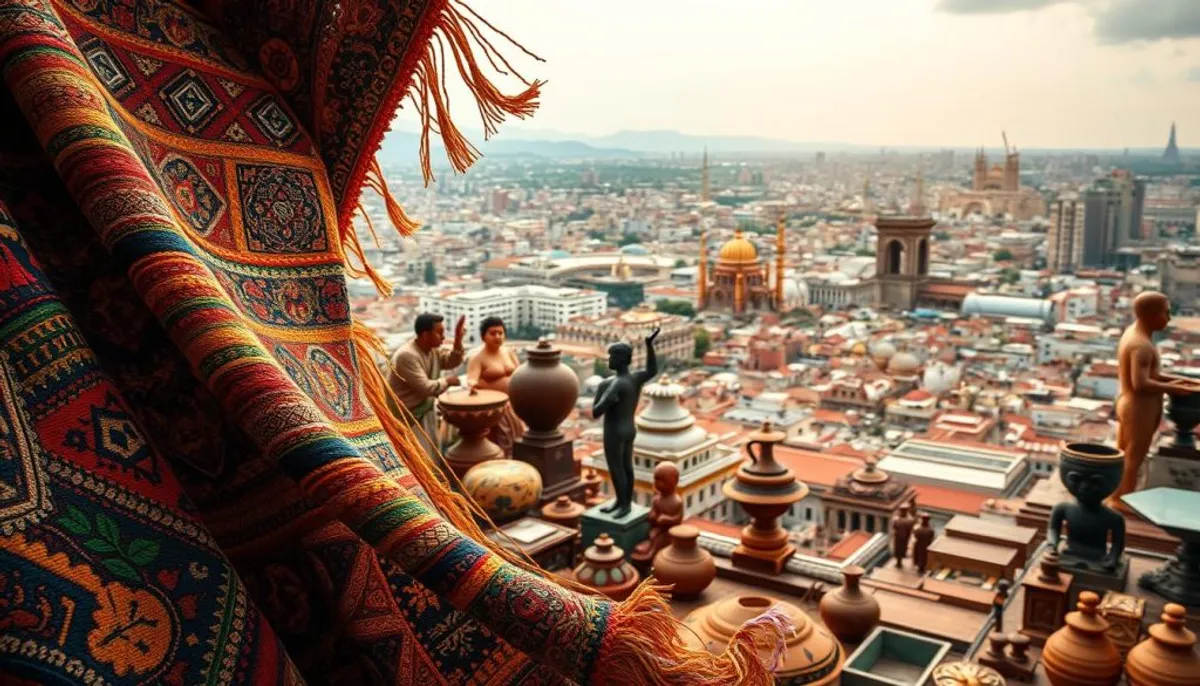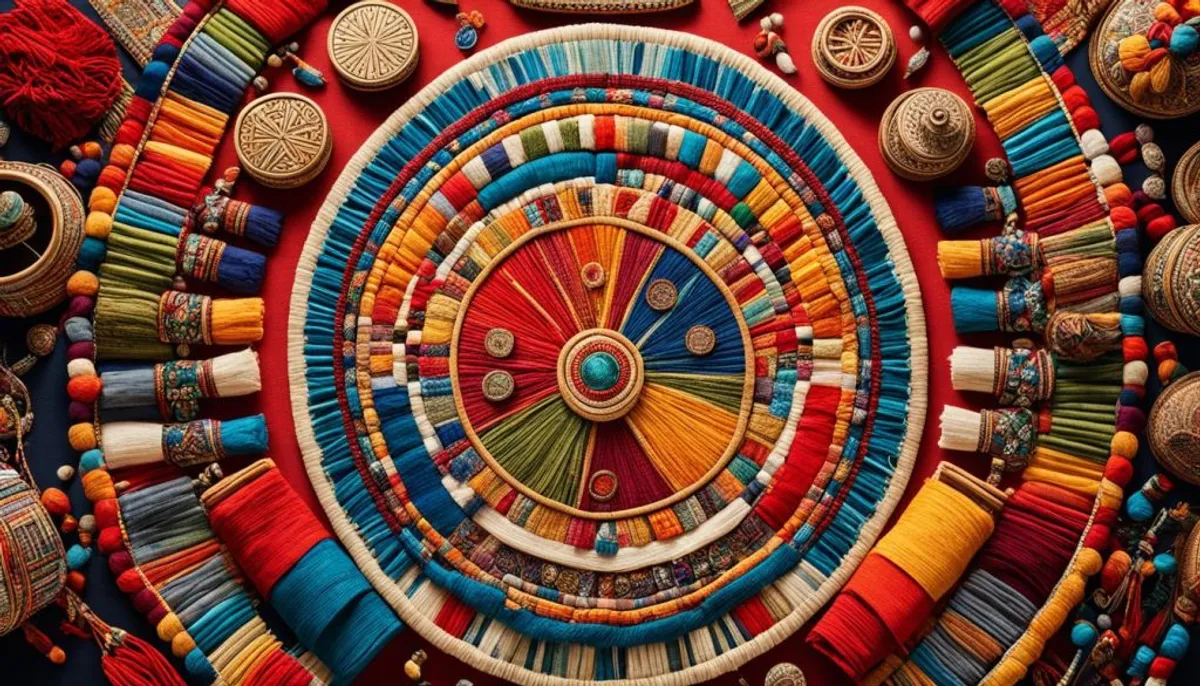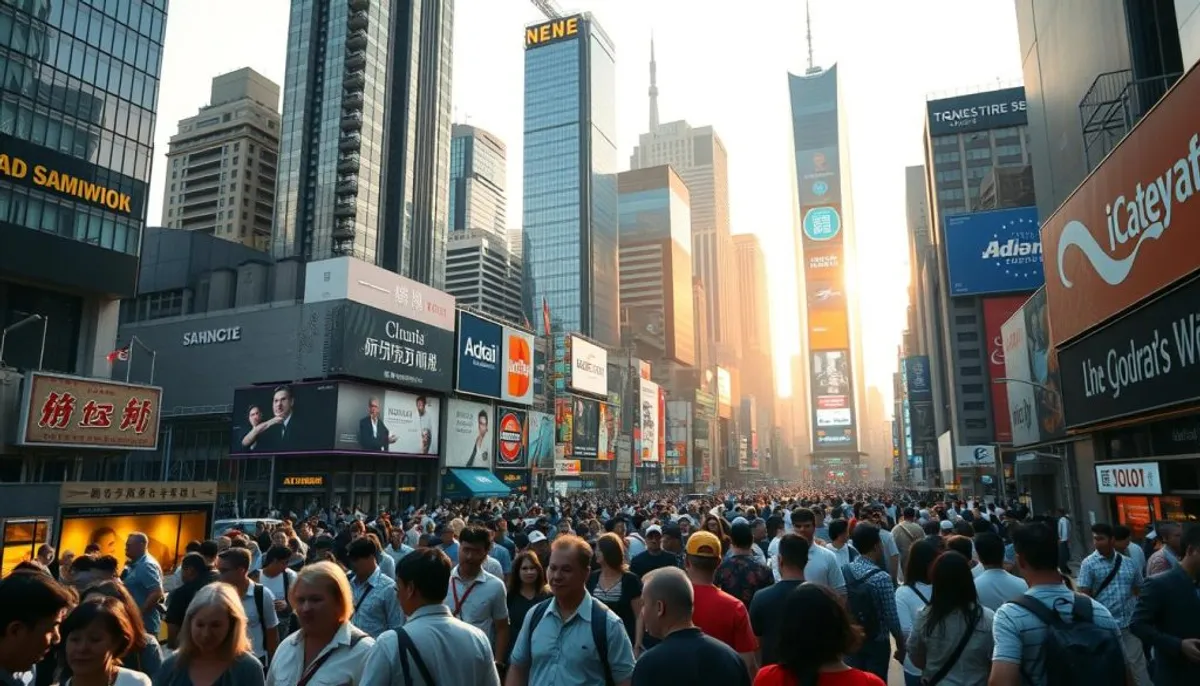Exploring the notion of culture immerses us in a rich and complex universe. It shapes our identity, our values, and our traditions. Culture encompasses art, literature, ways of life, and beliefs, thus defining a society.
UNESCO defines culture as “the set of distinctive spiritual and material traits, intellectual and emotional, that characterize a society or social group.” This definition highlights the diversity of cultural aspects, from artistic expressions to systems of values.

The cultural traditions are essential for transmitting the heritage of a society. They manifest in our customs, our festivals, and our rituals. The petroglyphs of Gobustan in Azerbaijan, dating back 10,000 years B.C., illustrate the ancientness and richness of cultural expressions.
Culture is constantly evolving, influenced by exchanges between societies and technological advancements. Today, mass culture and digital media are transforming our cultural practices. They offer new forms of expression and sharing.
What is culture: Fundamental definition
Culture, a rich and complex concept, is the set of distinctive traits of a society. It includes ways of life, beliefs, arts, and traditions. These elements form the cultural identity of a group.
UNESCO's definition
UNESCO offers a broad vision of culture. According to this organization, culture is “the sum of the distinctive spiritual, material, intellectual, and emotional traits.” These traits characterize a society or social group. This definition highlights the diversity of cultural expressions and their role in the cultural heritage of the world.
The essential components of culture
Culture is composed of several key elements:
- The language, a vector of communication and thought
- The shared beliefs and values
- The arts and cultural expression
- The customs and traditions
- The social institutions
These components form the fabric of a society's cultural identity. They influence behaviors and social interactions.
The historical evolution of the concept
The notion of culture has evolved over time. It began with agriculture and developed to include intellectual and social development. Today, culture is seen as a dynamic system in evolution. It is shaped by social interactions and exchanges between different societies.
The dimensions of individual and collective culture
Culture is divided into two crucial aspects: the individual and the collective. These two dimensions complement each other and shape our identity, values, and social interactions. They play a fundamental role in our existence.
Individual culture and Bildung
The term “Bildung” in German refers to personal culture. It represents a process of continuous growth and knowledge acquisition. This personal development enriches our understanding of the world and our ability to participate in cultural exchanges.
Collective culture and identity
Collective culture, or “Kultur” in German, encompasses the social, artistic, and ethical heritage of a group. It forms the foundation of collective identity and influences our social behaviors. For example, expressions of gratitude vary significantly between cultures, illustrating cultural diversity.

The interactions between individual and collective
The individual and the collective mutually influence each other in a dynamic process. Our personal culture enriches the collective culture, while the latter shapes our individual development. These complex interactions can sometimes lead to cultural shocks, but they are also a source of creativity and innovation.
Recognizing these dimensions allows for a better understanding of the challenges of cultural diversity in our modern society. It emphasizes the importance of promoting respectful and enriching cultural exchanges, while preserving individual and collective identities.
Cultural expressions and manifestations
The richness of cultural expressions is manifested through a multitude of artistic and traditional forms. Visual arts, music, literature, and theater are essential vectors for transmitting cultural heritage. These cultural manifestations play a crucial role in preserving the identity and diversity of peoples.
Cultural traditions are also expressed through festivals, rituals, and daily practices. These elements shape the social fabric and transmit the values of a society. The Convention on the Protection and Promotion of the Diversity of Cultural Expressions, adopted in 2005, emphasizes the importance of these manifestations.
UNESCO recognizes the dual value of cultural expressions: economic and cultural. Music and art festivals, for example, stimulate the local economy while celebrating cultural heritage. Tango in Argentina and flamenco in Spain perfectly illustrate this duality, attracting thousands of participants and contributing to the cultural identity of these countries.
| Cultural expression | Country of origin | Cultural impact |
|---|---|---|
| Tango | Argentina | National identity, cultural tourism |
| Flamenco | Spain | Intangible heritage, international festivals |
| Jazz | United States | Global influence, musical fusion |
Globalization significantly influences cultural expressions, fostering the integration of practices and artistic genres in various regional contexts. This phenomenon enriches the world's cultural heritage while posing challenges for the preservation of local traditions.
The transmission and evolution of cultures
Culture, this common reservoir of knowledge and practices, is constantly evolving. It is transmitted and transformed over time, shaping our way of being, thinking, and acting in society.
The mechanisms of cultural transmission
Cultural transmission occurs in various ways. Inclusive heritability measures the proportion of traits transmitted between generations. It ranges from 0 to 1, where 1 means perfect transmission. This transmission can be vertical (parents to children), horizontal (between peers), or oblique (between unrelated generations).
The influence of globalization
Cultural globalization has profoundly changed the dynamics of transmission. Cultural exchanges are intensifying, creating opportunities for mutual enrichment but also cultural shocks. This phenomenon challenges the traditional view of cultural heritage.
The adaptation of cultures over time
Cultures continuously adapt to social and environmental changes. This adaptation manifests through the evolution of practices, values, and traditions. Selection pressure favors certain cultural traits, just as it does in biological evolution.
| Type of transmission | Description | Example |
|---|---|---|
| Vertical | From parents to children | Family traditions |
| Horizontal | Between individuals of the same generation | Fashion trends |
| Oblique | Between unrelated generations | School education |
The study of these mechanisms of transmission and cultural evolution is crucial for understanding our constantly changing society. It allows us to grasp the challenges related to the preservation of cultural heritage while adapting to the realities of the modern world.
The different approaches to culture
Culture, a deeply complex concept, is approached from several academic perspectives. These diverse approaches enrich our understanding of cultural identity and cultural diversity. They have a significant impact on cultural policies.
The sociological approach
Sociology explores how culture influences social interactions. It examines societal structures and norms that shape our cultural identity. This perspective is essential for grasping cultural diversity within a society.
The anthropological approach
Anthropology provides a comparative perspective on world cultures. It highlights the diversity of human practices and beliefs. Claude Lévi-Strauss, in “The Elementary Structures of Kinship” (1949), emphasizes the complexity of separating the natural from the cultural, revealing the depth of cultural identity.
The philosophical approach
In philosophy, culture is seen as opposed to nature. Élisée Reclus, in 1905, stated: “Man is nature becoming aware of itself.” This idea questions the role of culture in defining humanity. Philippe Descola, in his lecture “Anthropology of Nature” (2001), highlights the opposition between nature and culture in Western thought.
These multidisciplinary perspectives reveal the complexity of culture. They influence cultural policies and our understanding of cultural diversity. They demonstrate that cultural identity is forged through varied interactions between the individual, society, and the environment.
Culture and modern society
Cultural globalization has profoundly transformed our societies. Cultural exchanges are intensifying, redefining our relationship with culture. In this context, cultural diversity becomes a major issue.

Working hours have significantly decreased, from 4000 hours per year at the beginning of the century to about 2000 hours today. This evolution has freed up time for leisure and cultural activities, changing our lifestyles.
The rise of the tertiary sector in industrialized societies has also impacted our relationship with culture. Service-related jobs, often more flexible, allow for greater participation in cultural activities.
Cultural diversity is also expressed in the professional world. A study reveals that multinational companies adopting intercultural diversity initiatives have a 20% higher employee retention rate.
| Aspect | Impact on modern society |
|---|---|
| Working hours | Reduction from 4000 to 2000 hours/year |
| Tertiary sector | Predominance in industrialized societies |
| Intercultural diversity | +20% employee retention |
Digital technologies are rapidly transforming our societies, influencing our communications and our economy. This rapid evolution raises questions about the preservation and adaptation of our cultures in this new context.
Contemporary challenges of culture
Today, culture occupies a central place in public debates, alongside the economy and the environment. This evolution reflects an awareness of the major challenges facing our societies. In terms of cultural heritage and cultural diversity, the challenges are considerable.
The preservation of cultural heritage
Cultural heritage, a precious legacy of our history, is threatened by urbanization and climate change. Cultural policies must adapt to protect this collective treasure. In France, the distribution of cultural spending is uneven, with Paris benefiting from a disproportionate share.
A decentralized management of culture, involving cultural councils at all levels, could help reduce these geographical disparities. This would allow for better distribution of cultural resources and assess the cultural impact of these initiatives.
The challenges of cultural diversity
Cultural diversity enriches our societies but raises complex questions. Statistics reveal that the French, despite a higher standard of living than their parents, perceive themselves as gloomy and pessimistic. This paradox reflects the tensions between tradition and modernity and underscores the importance of culture and society in our understanding of social dynamics.
Cultural policies must promote intercultural dialogue while preserving local specificities. This would help reconcile national identity and global influences.
The impact of digital technology on culture
Digital technology profoundly disrupts our cultural practices. Between 1900 and 1995, the leisure time of the French doubled, offering new opportunities for cultural consumption and creation. However, the digital age raises questions about equitable access to culture and the protection of copyright.
Cultural policies must adapt to these new realities. They must ensure a vibrant and accessible culture for all. This requires deep reflection on the impact of digital technology on our cultural heritage.
Conclusion
The question “what is culture” reveals remarkable complexity and dynamism. Culture shapes our identity, influences our perceptions, and guides our interactions. It is universal, as all humans live within a culture, highlighting its fundamental importance in our existence.
Cultural identity proves to be a valuable asset in various fields. In the academic world, some schools incorporate general culture tests to assess students' curiosity. Professionally, a cultured person is often perceived as having more substantial arguments, potentially opening doors to higher positions.
Cultural diversity enriches our society. It contributes to a better “living together” in the student environment and beyond. By discovering different lifestyles and beliefs, we develop our intercultural understanding. This openness is essential in our globalized world, where culture plays an indispensable role in our daily lives and our adaptation to contemporary challenges.
RelatedRelated articles


